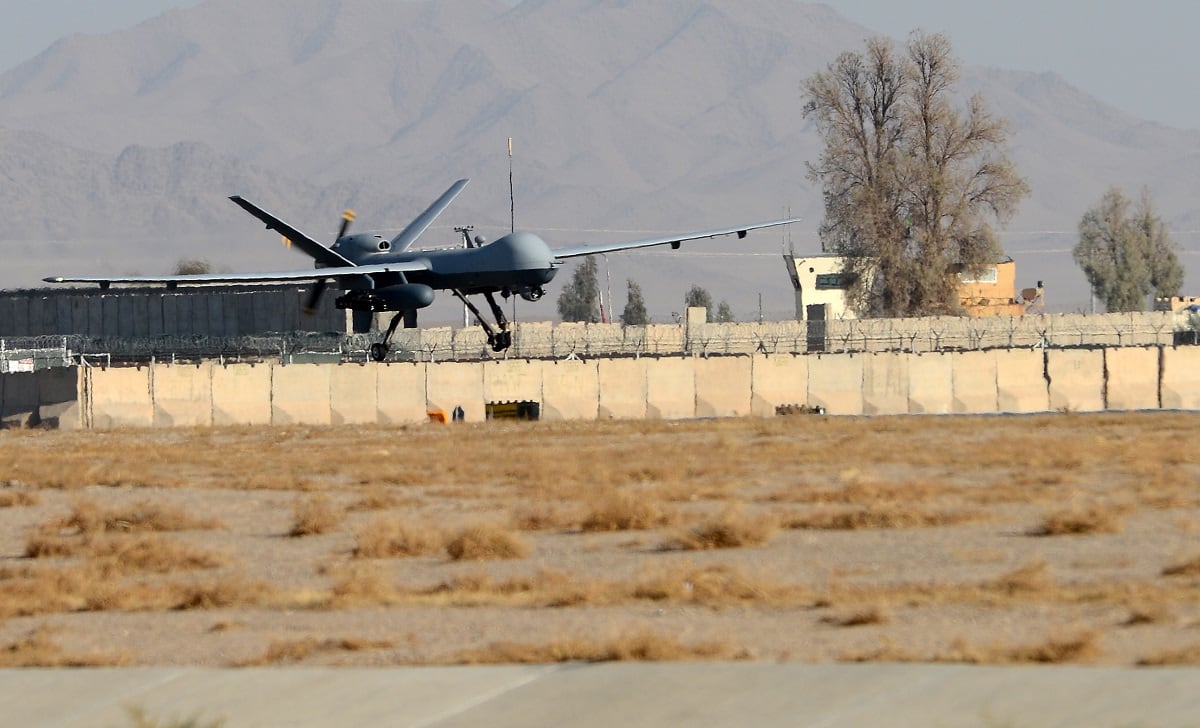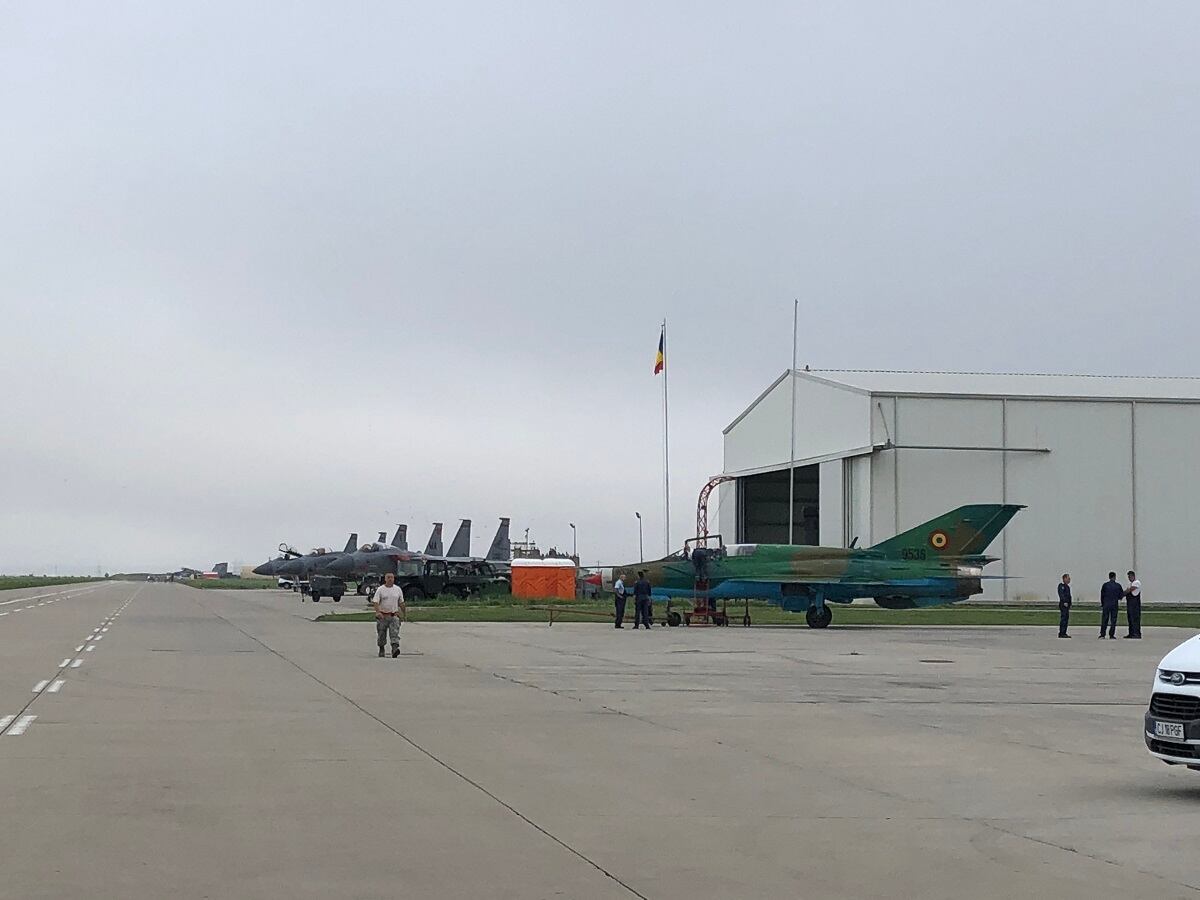CAMPIA TURZII, Romania, and WASHINGTON — U.S. F-15 Eagles, Greek F-16s and Bulgarian MiG-29s are engaged in a mission in Bulgarian airspace. Stormy weather has hit, which means communication over the radio is difficult, but meeting that day’s objective seems especially hard, with basically no guidance from one of the point players tapped to lead the mission.
Luckily, the planning done before takeoff was enough to steer all parties to successfully execute the mission. But afterward it comes to light that the leader’s radio had broken during flight.
“None of us knew that because his radio failed and he couldn’t tell us,” said Lt. Col. Jay “Fat” Talbert, an F-15 pilot who participated in the exercise. “But his wingman could have told us, and then, for example, I could have stepped in and took over the leadership role of the mission."
The types of learning experiences provided by exercises like July’s Thracian Star are par for the course for U.S. Air Force pilots temporarily deployed to eastern Europe as part of the military’s efforts to deter Russian aggression and tighten bonds with allies.
In a real air-to-air confrontation, a communication breakdown — whether due to a failed radio or a strong accent — could mean the difference between life and death. That’s why the Air Force is spending $126.5 million in fiscal 2019 to “retain combat air forces” in Europe, using mechanisms like periodic air-policing deployments or “theater security packages” aimed at increasing international training opportunities.
Talbert is part of the 131st Expeditionary Fighter Squadron, a theater security package that deployed to Romania’s Campia Turzii in June and returned stateside on Sept. 28. The squadron is made up of about 300 airmen from the 104th Fighter Wing at Barnes Air National Guard Base in Massachusetts, including 18 pilots and 12 F-15C/Ds, chosen for training with partners like Romania, the United Kingdom and Bulgaria.
RELATED

After the 131st arrived in Romania, pilots began flying an average of three to four times a week — a hike from the two to three times per week expected while at home station, said Lt. Col. Andrew “Bishop” Jacob, an F-15 pilot who leads the squadron. Defense News spoke to Jacob, Talbert and other members of the squadron during a trip to Campia Turzii in late July.
The squadron participated in Thracian Star with Greece, Bulgaria and the U.K. in July, and later in the deployment training with F-22 Raptors, KC-135 Stratotankers and C-130J aircraft that traveled from Spangdahlem Air Base, Germany, to Campia Turzii, according to a U.S. Air Force release.
But the real value of the deployment came from repeated exposure and cooperation with the Romanian Air Force.

At the time of Defense News’ visit to Campia Turzii, the Romanian Air Force had grounded its MiG-21 inventory — including Campia Turzii’s 711st and 712st fighter squadrons — after a MiG-21 crash at an air show led to the death of a pilot. Still, Romanians and Americans could be seen working together on base security, logistics and binational social events such as a friendly game of soccer.
While MiG-21s were still grounded, the 131st partnered with the Romanian military on an unexpected mission: close-air support training.
The F-15, one of the most storied air superiority planes in history, was built to fight other aircraft, not defend troops on the ground by striking ground targets like the A-10 Warthog — making close-air support a mission set that is rarely practiced by pilots, Talbert said. But American F-15 pilots took on a number of strafe runs conducted with Romanian air controllers who called in airstrikes, which the F-15s then executed with live rounds.
“The [air controller] was really skilled and capable, just like a U.S. [joint terminal attack controller],” Talbert said. “He did an exceptional job, especially his first time working with us. That mission set is not something we practice very much, and it went really smoothly.”
Romanian MiG-21 flights at the base resumed the week of July 30, giving the 131st and its Romanian hosts the opportunity to train together.
The U.S. Air Force has been a frequent visitor to Campia Turzii over the past couple of years, and that exposure has given Romanian pilots greater experience with planning air-to-air missions, employing the MiG-21 and developing — with U.S. pilots — a common understanding of threats, said Lt. Col. Calin Hulea, the 711st’s deputy squadron commander for operations.
And although the MiG-21 isn’t a technological match for the F-15, it can pose a new set of problems for U.S. pilots in a dogfight.
“We are training for fighting in a visual arena because of the weapons we carry on the aircraft. We don’t deploy BVR [beyond-visual-range] missiles,” Hulea said. “I don’t say that the MiG is very good — it’s not — compared with the F-15. But our strength or our advantage is that the MiG is very small, and so I think it’s a challenge for the F-15 guys to pick out visually.”
“For us, of course, the maneuverability of the aircraft is not comparable to the F-15, so we have to come up with some other plan,” he added. “I’m not saying that the MiG will be the winner, but we focus on the fact that we have to train to plan the mission, to do the mission and to debrief this. And if we do this and we achieve the small objectives that we set for ourselves, for us, it’s wonderful.”
Becoming familiar with small details about an partner’s aircraft, like fuel or communications capability, can be a huge advantage in a wartime engagement, said Jacob, the commander of the 131st.
“When a combat scenario actually happens, there’s almost never enough time to learn that as it happens. So when you talk about the fog and friction of war, what we’re really doing is getting the knowledge required to minimize the fog and friction that typically happens in the first hours, days and weeks of a combat scenario. And in the end what that means is fewer lives lost on the allies' side.”
Valerie Insinna is Defense News' air warfare reporter. She previously worked the Navy/congressional beats for Defense Daily, which followed almost three years as a staff writer for National Defense Magazine. Prior to that, she worked as an editorial assistant for the Tokyo Shimbun’s Washington bureau.





